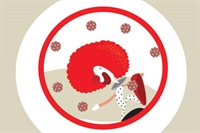Assessment is a tricky thing. Many people, including educators and students, hear the word assessment and think “test.” However, assessment is much more than that—it’s a way to gather, interpret, and use information in many ways and at many times during the school year.
Every teacher needs a bag of assessment tricks to gather the data necessary to teach effectively and differentiate instruction to meet the needs of all students.
Assessing Before Teaching
Teachers assess before teaching to determine students’ prior knowledge. If results show students have already mastered certain content, teachers can alter their lesson plans so they are not presenting material that students already know.
Consider these alternative pre-tests to inform your instruction.
Word Splash. A Word Splash is similar to a Word Web. The subject of the unit goes on the center of a page and the students take turns contributing information related to the subject. The recorder writes down all the contributions on the paper; no one makes judgments regarding the responses.
When the activity is finished, you have in front of you the information your students know about the topic. Now, you can assess the students’ knowledge as well as misinformation. The Word Splash becomes a checklist to inform your instruction.
Journaling. You can incorporate journals as part of the assessment process throughout the unit. Ask students to respond to open-ended or specific questions about a topic prior to the targeted lesson. When you review the journals you can learn about each student’s thought processes and knowledge and tailor the teaching and activities as necessary.
Assessing During Teaching
Assessment during teaching is often informal. The following techniques are useful during instruction to determine student understanding and knowledge.
Ongoing Questioning. Take a few minutes before instruction to construct thoughtful, open-ended questions about the content you are teaching. Ask these questions during a lecture or incorporate them into smallgroup activities. Your goal is to determine the level of understanding the students have about the given topic as you teach the content.
Ticket Out the Door. The Ticket Out the Door is a quick way to assess student understanding of an integral part of a unit or assess how the students are feeling about their learning that day.
Ask students to complete the sentence, “I still have a question about ____” and turn in their completed sentence as they exit the classroom. Review their responses to quickly monitor where students are in the process of mastery. Also ask students to complete the sentence, “The point of today’s lesson or activity was ____” to assess whether they are making the appropriate connections.
Based on the information gathered from the Ticket out the Door activity, you can adjust instruction for the next class.
Assessing After Teaching

The unit has concluded and it is now time for the test. Or is it? The conventional test is not the only way to assess students’ mastery of content at the end of a unit.
Student-Made Tests. Have the students make their own tests and trade them with each other. Yes, they are still taking a test, but they are more motivated because it came from their peers. You are assessing students less on the results of their performance on the test, and more on the test they created. Their understanding of the information will come through on the questions they formulate.
Collage/Poster/Diorama. Let the students be creative! Have them list the 5–10 major points of the unit and then choose one to illustrate in some way. In history, it might be a major battle of the war. In language arts, it might be a favorite chapter of a book. In math it may be an active illustration of applying decimal division. In science, it might be the parts of a leaf.
Allowed creativity and choice, students are more likely to show what they know in ways you may not have considered.
Essay. Ask the students apply what they learned by answering a question such as, “What would you have done if you were the main character? Explain how you would act similarly or differently.” Another question might be, “How might you use this information in the real world?”
When they answer questions like this, students not only demonstrate their simple understanding of information, they also respond on a higher cognitive level and exhibit at a deeper level of understanding.
Final Thoughts
By assessing students in a variety of ways, teachers can get new insights into their knowledge and the way they learn. That knowledge can help teachers differentiate instruction in the classroom to meet each student’s needs—and that leads to greater success in the classroom.
Patricia A. Lutz is a professor in the elementary education department of Kutztown University in Kutztown, Pennsylvania. She taught middle grades mathematics for 19 years. E-mail: lutz@kutztown.edu
